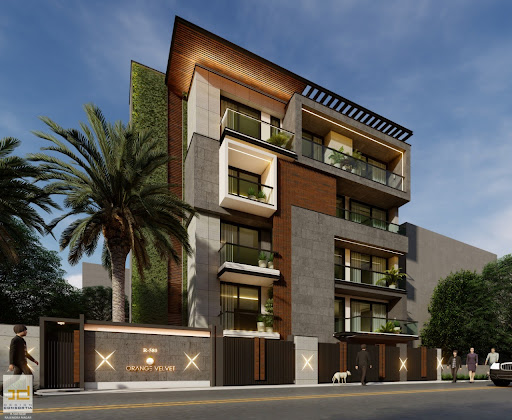Man, no matter how advanced, is linked to nature. There is advancement in green architecture all over the world. According to a study, people are more positive and in a better mood when architecture and nature coexist, and environmental damage is reduced on a greater scale. With the recognition of this requirement, the architectural world is intervening with design styles and benefits that lets users experience the natural world in proximity. This is either introduced through biophilic design or green walls.
With the biophilic design, users can live in constant contact with nature by combining open spaces and landscape areas with developed spaces. One of the best ways to amalgamate architecture with nature is to use natural materials in their most raw or unprocessed state. Every day, one is in constant contact with spatial materials in their surroundings. As a result, the use of natural materials such as wood, clay, mud, stone, bamboo, and other similar materials in buildings brings one closer to nature. Additionally, using a colour palette that includes earthy colour schemes greys, blue, brown, earthy green, and rusty tints promote a sense of harmony between people and nature.

The use of solar panels, rainwater harvesting systems, natural heating and cooling systems, garbage, and sewage treatment systems additionally supply vital resources to the structure while simultaneously reducing the environmental effect on a larger scale. It also makes consumers aware of their responsibilities to the environment. Simple and minimalistic design without extraneous lines and forms, as well as the inclusion of natural materials, creates an environment that keeps consumers more linked to the built layout.
It is crucial to include outdoor spaces in the built environments and have an access to sunlight and ventilation throughout the day. Natural stones can be used as decorative elements and sculptures in the interiors of the house while planters can be used for indoor gardening and an aesthetic decor.
Combining architecture with nature involves not just the design of spatial features, but also the impact that architecture has on the environment at a larger scale. The amount of waste generated during construction and afterward should be kept to a minimum, and the entire construction process should be meticulously managed. To lessen the adverse impact on the environment, one must aim to return what is taken from nature in the least polished form possible.
Design Consortia is one such architectural firm that truly believes in combining architecture with nature in all ways possible, be it sustainability or adding greenery in the designs. The infusion of architecture into nature is one step that the AEC industry is consciously taking with sustainable designs and using the resources available judiciously.

